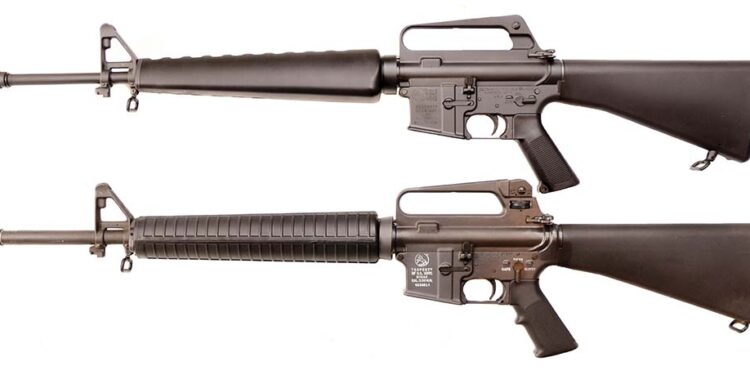By Frank Iannamico
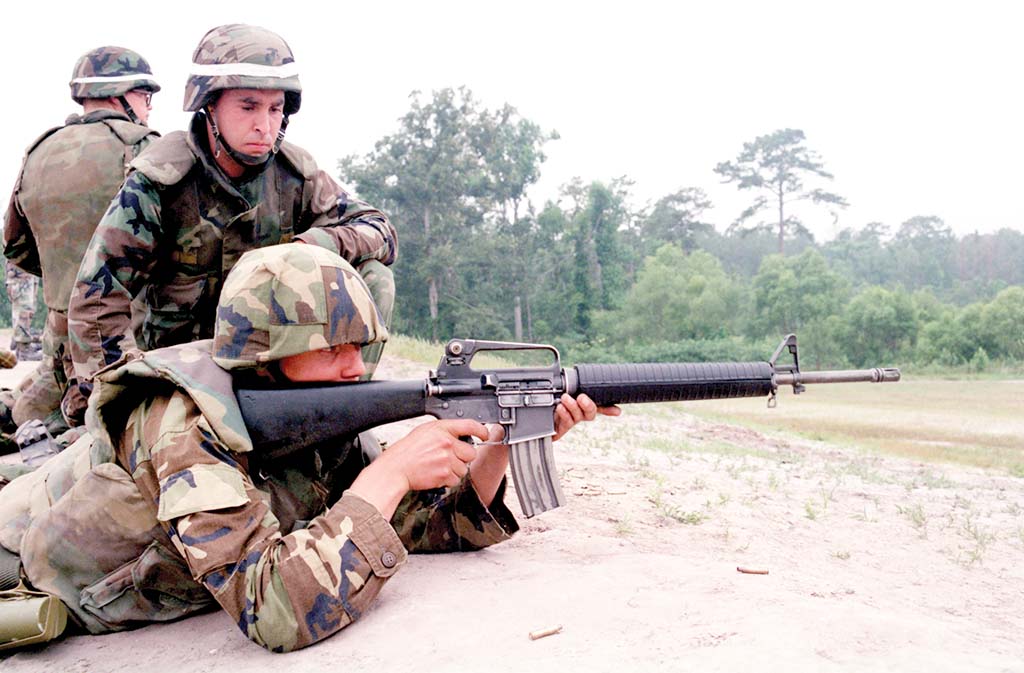
After successfully evolving from the XM16E1, the Colt M16A1 rifle, adopted during 1967, continued in service until 1983. Despite the rifle’s problematic beginning during the Vietnam War, it evolved into a world-class military weapon, and its 5.56mm cartridge has become the NATO standard.
The origins of the M16A2 rifle began with a request from the U.S. Marine Corps, who pride themselves on marksmanship and a tradition of “Every Marine a Rifleman.” During September of 1979, Marine Corps representatives met with Colt to discuss their ideas on how to improve the M16A1 rifle. They wanted a rear sight adjustable out to a range of 800 meters, a more accurate cartridge, and one that could penetrate military helmets and body armor at 800 meters. The Marines wanted a 3-round burst feature in place of the full-automatic function. During training, the Marines were hard on their weapons, particularly during bayonet drills. In order to have their rifles stand up to rough use, they requested a heavier barrel, and more durable plastic stocks and forearms.
The Joint Services Small Arms Program approved a rifle evaluation program and ordered fifty Product Improvement Program (PIP) M16s. The updated rifles were assembled on M16A1 lower receivers and designated as M16A1E1 rifles. These modified weapons were tested by U.S. Army and Marine Corps personnel. The Marines were enthusiastic about the M16A1E1’s enhanced performance, and it was type classified as the M16A2 rifle during September of 1982. It was adopted as the Standard A rifle in November 1983. The Marine’s initial order was for 76,000 M16A2 rifles, and the first delivery went to their Marksmanship Training Unit in January 1984. The U.S. Army, whose marksmanship training was different than that of the Marine Corps, was less interested in the new rifle and had plenty of serviceable M16A1 rifles in their inventory. That said, the Army ordered their first lot of M16A2 rifles in 1986.
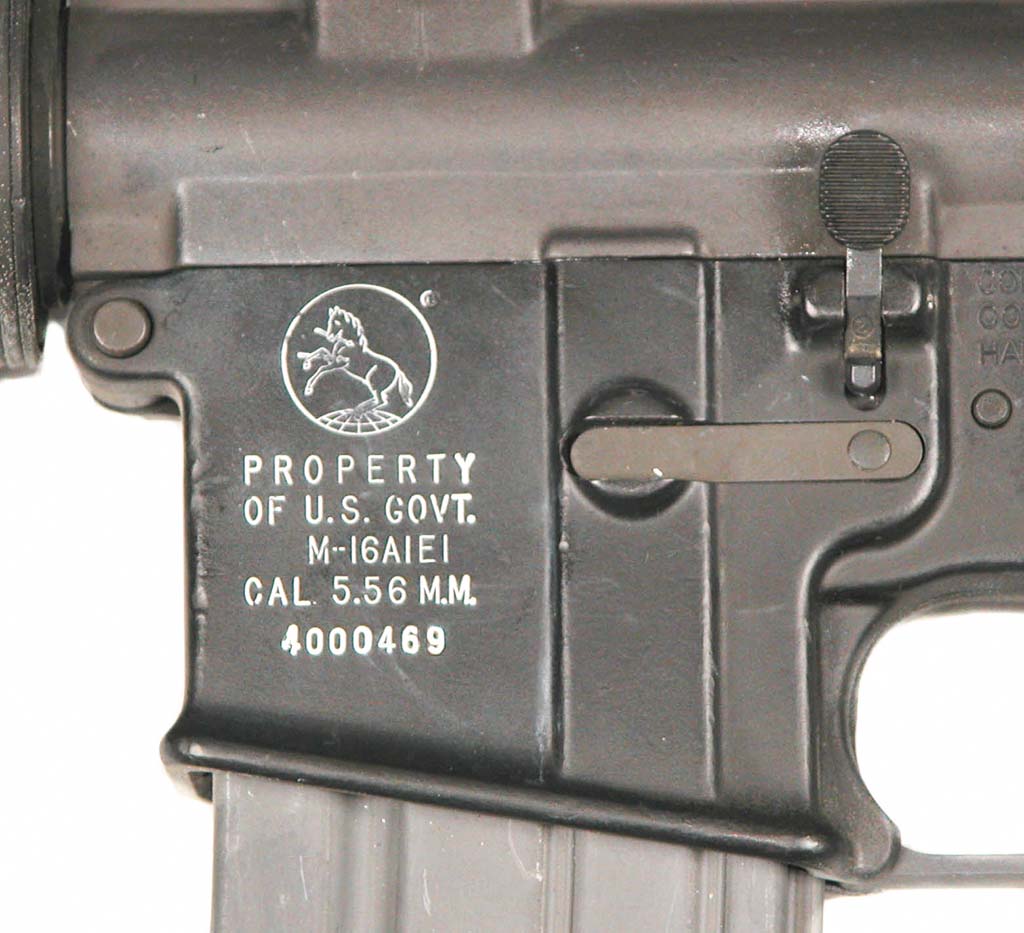
As adopted, the M16A2 rifle had several new features, some of which proved to be controversial. The features implemented into the PIP M16A2 included:
- A three-round burst, replacing the full-auto function
- Case deflector for left-handed shooters
- A new flash-hider / muzzle brake
- Barrel with 1:7 twist to stabilize the M855 and M856 cartridges with the longer, heavier bullets
- The diameter of the barrel was increased from the rear sight base to the muzzle
- Rear sight adjustable for elevation and windage
- Square front sight post
- Interchangeable handguards
- Longer buttstock with new buttplate
- Pistol grip with finger rest
- Tapered slip ring
- Round forward assist plunger
- Receiver reinforced at the rear area and the front pivot pinhole
Critics
Not everyone was happy with the updated M16A2 rifle. Complaints were that the 3-round burst was not resetting. In other words, if one shot was fired, the next trigger pull would only fire two shots; if two shots were fired, the next trigger pull would fire one shot.
Older M16A1 rifles with their barrel’s 1:12 twist rate could not stabilize the new M855 round and the M856 tracer round with their heavier and longer bullets
The new adjustable rear sight was considered overly complex for a combat weapon. The Marines, who requested the new rear sight for the M16A2 trained differently than the other services, particularly the Army whose evaluators were not as receptive to this change. Canada adopted the M16A2 as the C7 but retained the M16A1 upper receiver with the less complicated rear sight.

The M16A2 rifle has a loaded weight of 8.8 pounds, which is nearly a pound heavier than the M16A1 at 7.9-pounds loaded. Most of the weight increase is due to the M16A2’s heavier barrel.
In 1989, kits were made available to upgrade M16A1 rifles remaining in inventories to the M16A2 configuration. Handstamps were used to mark the receivers signifying the upgrade. The kits included: the M16A2 rifle’s barreled upper receiver, burst trigger group, buttstock, pistol grip, and handguards. These kits were supplied to the U.S. Military by several contractors.
The M16A3 Rifle
The M16A3 variant was simply an M16A2 that had a full-automatic feature in place of the 3-round burst. Very few were manufactured and issued.
The M16A4 Rifle
From the very beginning, the AR-15/M16 series of rifles featured an integral carry handle. This was a necessary design feature because the buttstock was in line with the longitudinal axis of the barrel’s bore, increasing controllability during automatic fire. However, the height and placement of the carry handle required the rear sight to be elevated. Additionally, this handle design made it difficult to adapt any type of newly developed, modern optics to the rifle. To solve this problem, the M16A4 was introduced in 1997. The M16A4 model had a flat-top upper receiver with a Mil-Std-1913 rail. Initially, the upper receiver had a detachable M16A2 carry handle that was secured with thumbscrews to the rail. The handle could be easily removed, and the rail used for mounting optics and other ancillary devices.
The 3-round burst feature of the M16A2 was retained in the M16A4 design. Eventually, the original round handguards fitted to the M16A4 rifle were replaced by the M5 Rail Adapter System from Knights Armament, providing a solid platform for the attachment of additional equipment. In 1997 the M16A4 rifle began replacing the M16A2 as the standard rifle of the U.S. military. Both rifle models were manufactured by Colt and FN.
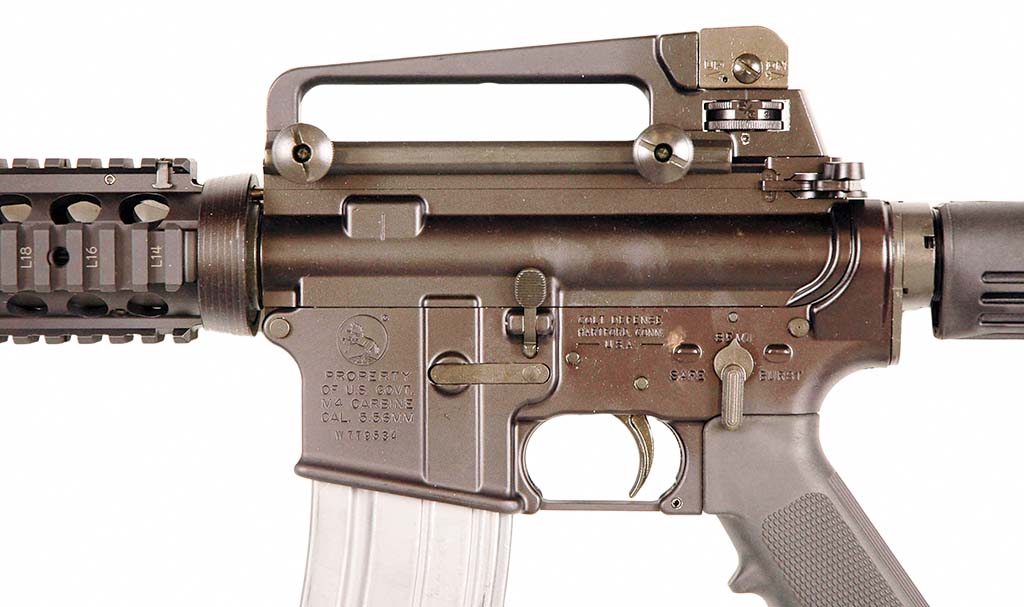
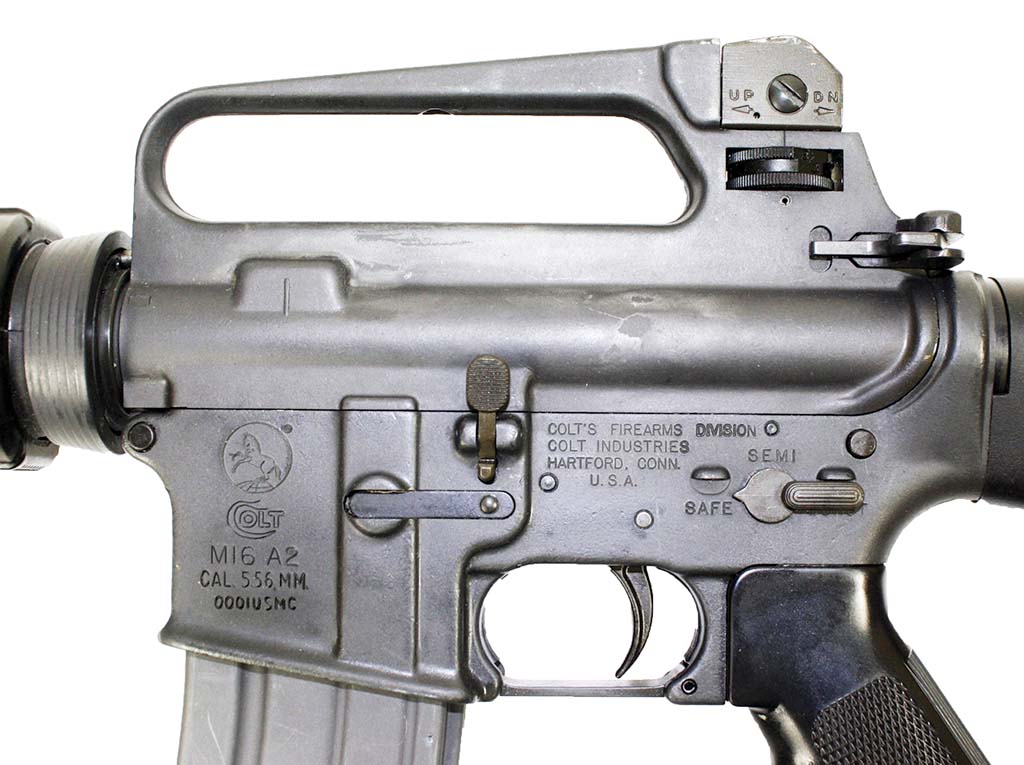

The M4 Carbine
The M4 and M4A1 carbines, initially adopted in 1994, became the U.S. standard issue weapon replacing the M16A2 and M16A4 rifles. These compact carbines feature a 14.5 inch barrel and a collapsible buttstock. In 2012, the Army began procuring the M4A1 variant and issued a Modification Work Order (MWO) to upgrade existing M4 carbines to the M4A1 configuration. The M4 has a 3-round burst feature, while the M4A1 has gone back to having a full-automatic function. The M4A1 also has an ambidextrous selector and a heavier barrel.
The Colt Factory Strike
Colt employees were Members of United Auto Workers Local 376, they walked off the job on January 24, 1986, after working 10 months without a contract. The strike officially ended four years later, on March 22, 1990, with the announcement of a buyout agreement that made Colt employees co-owners of the plant, along with managers, the state of Connecticut, and private investors. During 1988, while the Colt employees were on strike, Colt lost their M16 contract to FN.

FN M16A2 Rifles
In 1988 the U.S. Government awarded a $112.1 million contract to a Belgian firm to produce 266,961 M16A2 rifles over five years. Under the new contract, the M16A2 and M16A4 rifles would be made at Fabrique Nationale Herstal’s (FN) manufacturing facility in Columbia, South Carolina. FN Manufacturing confirmed that their bid of $420.00 for each rifle (compared to Colt’s bid of $477.50) would save the government approximately $15.3 million over the life of the contract. Many of Colt’s patents on the rifle expired in 1983, but a licensing agreement with the United States Government permitted the Army to give technical data on the weapon to other manufacturers. Both the U.S. Army and Colt Industries, inc., announced the change had resulted solely from Colt’s being underbid by FN, and that it was not related to the quality of Colt rifles, or the strike by Colt workers in Hartford.
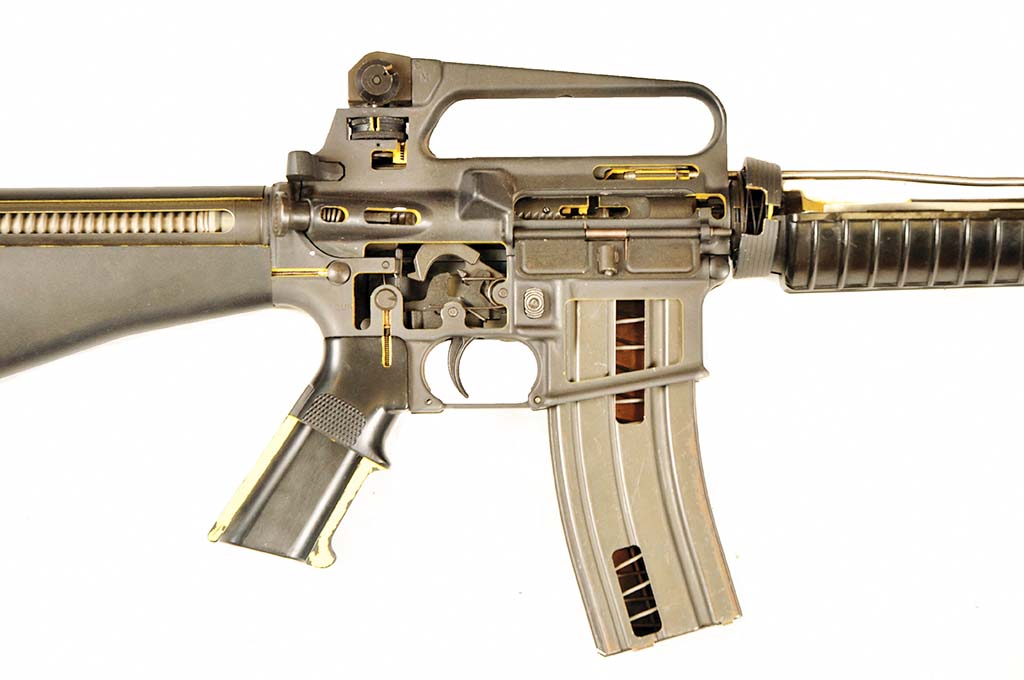
Other M16A2 and M16A4 Rifles
In addition to FN and Colt, M16A2 and M16A4 receivers and rifles were manufactured in small numbers by other companies.
Sabre Defense LLC
During July of 2008, Sabre Defence of Nashville, Tennessee was awarded a U.S. Government Indefinite Delivery/Indefinite Quantity (IDIQ) contract for 4,952 M16A3 and 702 M16A4 rifles to support the U.S. Navy, U.S. Marine Corps, and foreign military customers. Sabre joined Colt and FN as the third company chosen to manufacture M16 rifles for the government since the weapon was adopted.
In February of 2010, federal agents raided Sabre Defence’s Nashville, Tennessee facility. Several company executives were charged with illegally exporting firearm components and other defense items. The accused admitted to concealing Sabre’s illegal exports from 2003 until 2009, using falsified shipping documents and shipping crates with false bottoms. Sabre maintained a fictitious set of business records to conceal its unlawful shipments of firearm parts. Unable to recover from the incident, Sabre Defence declared bankruptcy and went out of business in 2013. Very few Sabre M16 rifles were delivered to the U.S. military.
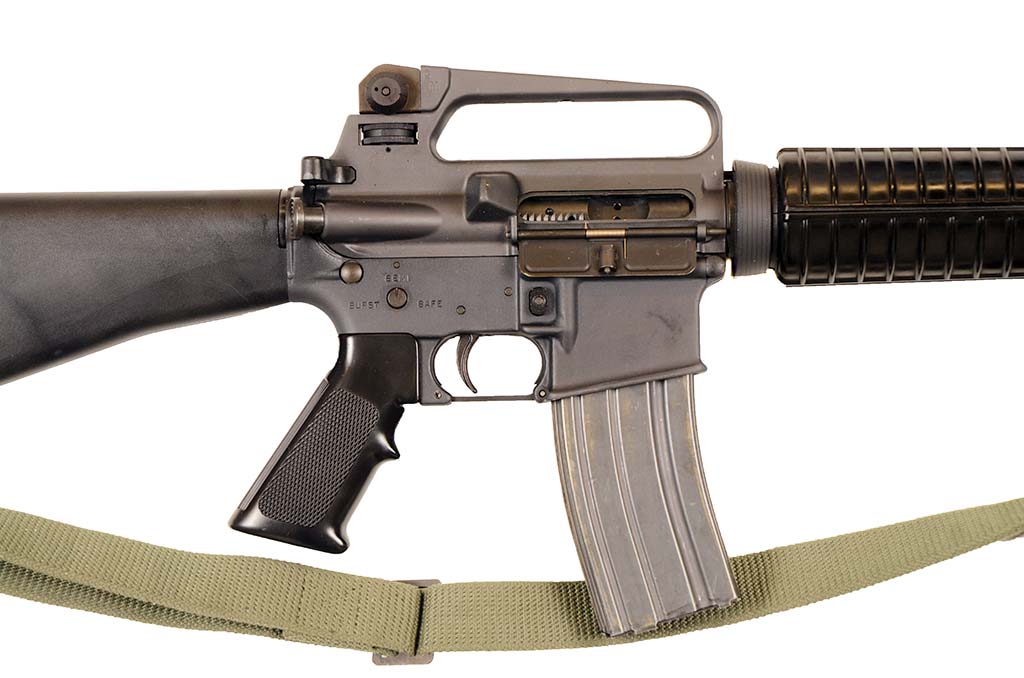
Balimoy Manufacturing
The Balimoy Manufacturing Company of Venice, Florida manufactured replacement receivers for M16 rifles. Most were originally marked as M16A1 with an AUTO selector position. The A1 model was over stamped A2 and the word AUTO milled out and re-stamped BURST. The receivers were marked: MFR 2U894, Property of U.S. Govt’ BALIMOY MFG CO
VENICE, FL. During a program to rebuild and update M16A1 rifles to a M16A2 configuration, the U.S. Anniston Army Depot used Balimoy M16 receivers to replace original receivers that were rendered unserviceable.
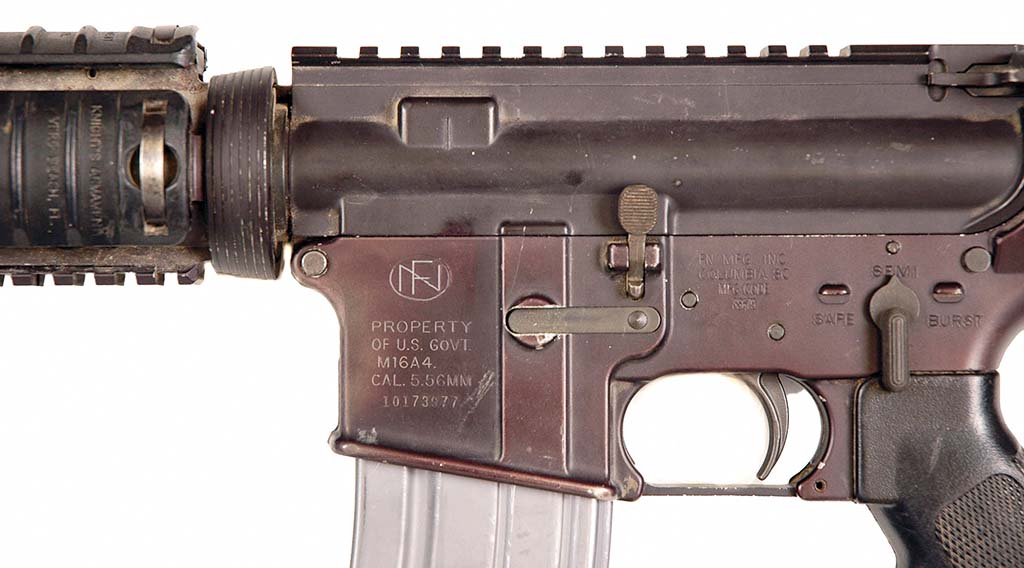
Transferable M16A2 Rifles in the NFA Registry
Fortunately for the NFA world of enthusiasts, a small number of Colt manufactured M16A2 rifles made it into the registry before the 19 May 1986 cut-off date, which ended the registration of transferable machine guns. Most of the available M16A2 rifles were those made for the export and police market, the serial numbers documented were in the 8,000,000 range. However, there were a few U.S. Gov’t Property marked M16A2 rifles that made it into the system, allegedly registered by John “K”, a somewhat mysterious individual from Pennsylvania. To date, there have been 35 documented serial numbers of transferable U.S. marked Colt M16A2 rifles in the NFA registry. Manufactured during 1983-1986 these serial numbers are in the six-million range. John “K” was reportedly also involved in procuring a number of H&R M14 rifles, and US Gov’t Property marked M16A1 rifles from Harrington and Richardson’s asset reduction sale in 1985.

Most of the transferable Colt M16A2 rifles manufactured for the commercial market which made it into the NFA system were assembled with full-auto capability, and the selector position marked AUTO. Meanwhile, most of the U.S. Property marked M16A2 rifles were fitted with the U.S. military designated 3-round burst feature; the selector position marked BURST. However, the 3- round burst can easily be converted to a full auto function by simply replacing the trigger group, the same applies if a 3-round burst feature is desired. Due to their smaller numbers, M16A2 rifles generally sell for a higher price than the more common M16A1 model.
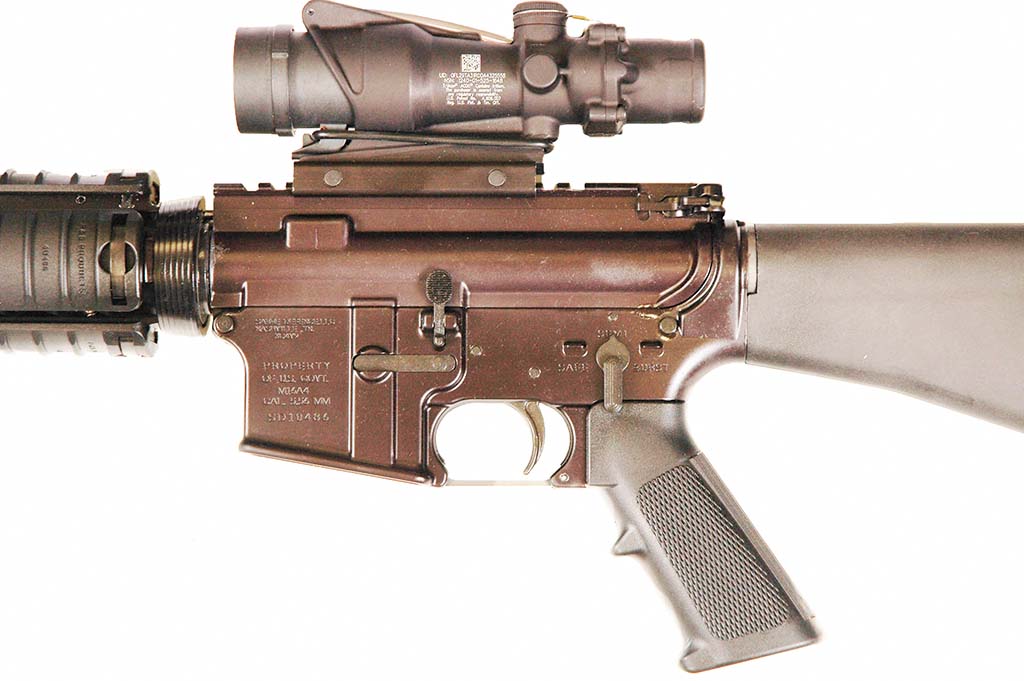
RECOMMENDED READING
Black Rifle M16 – Vol. 1 & 2 by Christopher R. Bartocci, R. Blake Stevens, Edward C. Ezell
Vickers Guide: AR-15 by Larry Vickers, James Rupley
| This article first appeared in Small Arms Review V25N4 (April 2021) |



